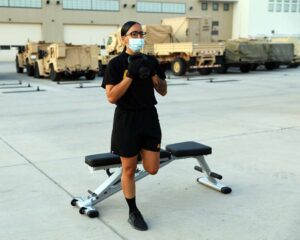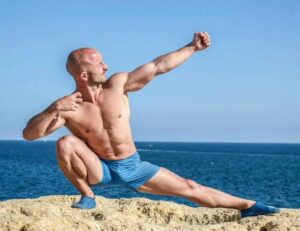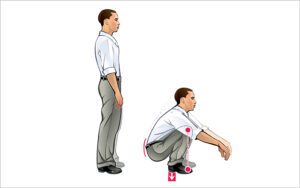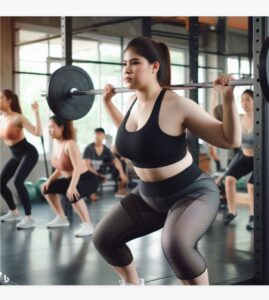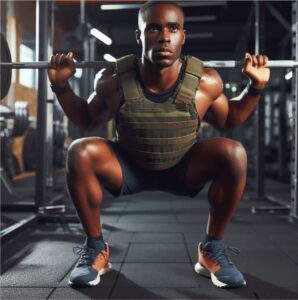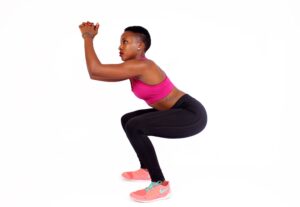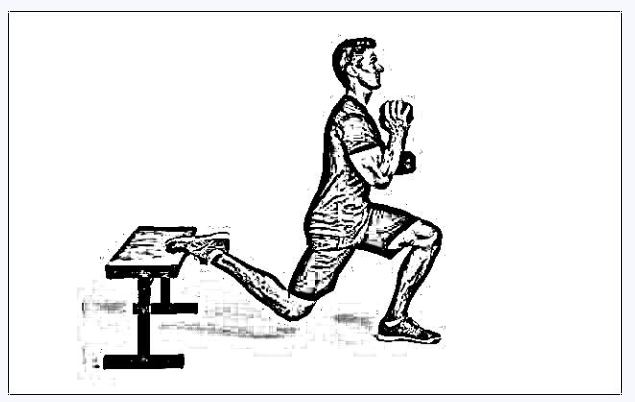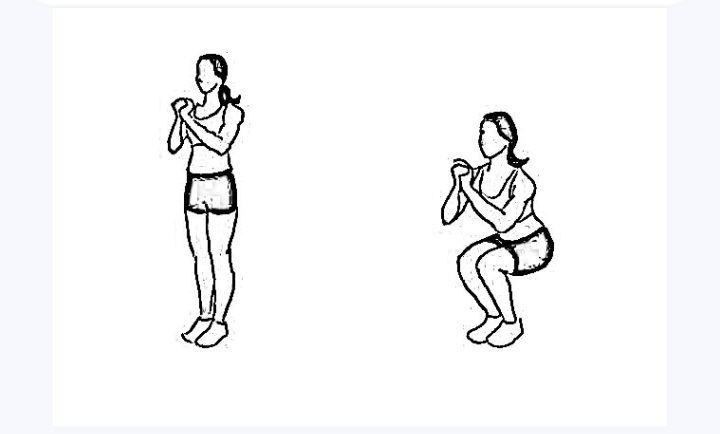
When it comes to lower body exercises, squats are often considered the king. They target multiple muscle groups simultaneously, making them an efficient and effective exercise for building strength and improving overall fitness. While traditional squats are popular, there is another variation that deserves attention: narrow squats.
Narrow squats, a variation of the traditional squat, involve a closer stance, targeting specific muscle groups and offering a unique set of benefits for individuals seeking to enhance their lower body strength and overall fitness.
In this article, we will explore the nine unique benefits of narrow squats and How to do them correctly to reap these benefits as well as tips for optimizing the narrow squats benefit.
Unique Benefits of Narrow Squats
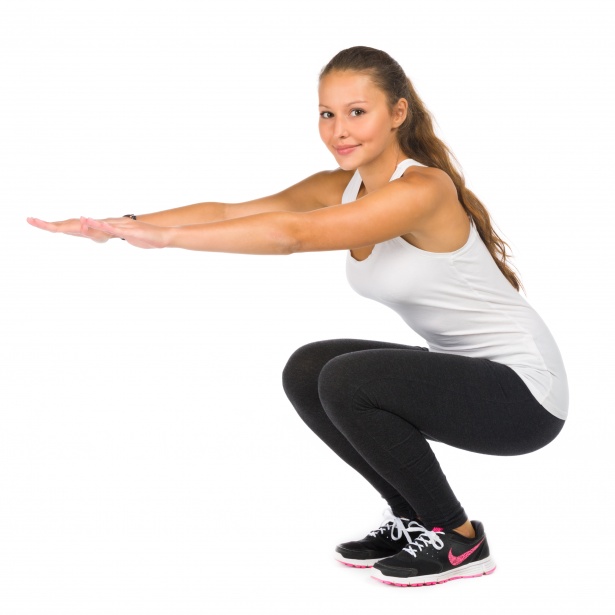
Here are the 9 benefits of narrow squats:
- Increased Quadriceps Activation
- Improved Hamstring Engagement
- Stronger Glute Activation
- Enhanced Core Stability
- Improved Hip Mobility
- Increased Ankle Stability
- Functional Strength Development
- Joint-Friendly Exercise
- Versatility and Variety
Let’s explore each of these narrow squats benefits.
1. Increased Quadriceps Activation
The quadriceps muscles, located on the front of your thighs, are heavily targeted during narrow squats. With a narrower stance, the emphasis is placed on the quadriceps, leading to increased activation and muscle growth. If you’re looking to develop stronger and more defined quads, narrow squats are a great choice.
2. Improved Hamstring Engagement
Although narrow squats primarily target the quadriceps, they also engage the hamstrings to a significant degree. As you descend into the squat, your hamstrings work to stabilize your knee joints and assist in the movement. This helps to develop balanced leg strength and reduce the risk of muscle imbalances or injuries.
3. Stronger Glute Activation
While squats are known for their ability to work the glutes, narrow squats take it to the next level. By narrowing your stance, you increase the emphasis on the glute muscles, including the gluteus maximus and medius. Strengthening these muscles not only enhances your lower body strength but also improves hip stability and overall athletic performance.
4. Enhanced Core Stability
Narrow squats require greater core stability compared to wider stance squats. With a narrower base of support, your core muscles, including the abdominals and obliques, must work harder to maintain proper form and balance throughout the movement. This helps to develop a stronger and more stable core, which is essential for overall functional strength.
5. Improved Hip Mobility
Performing narrow squats requires a greater range of motion in the hips compared to wider squats. This can help to improve hip mobility and flexibility over time. By consistently incorporating narrow squats into your routine, you can enhance your overall hip function and reduce the risk of hip-related issues.
6. Increased Ankle Stability
The narrower stance in narrow squats places greater demands on ankle stability and strength. As you lower your body into the squat position, your ankles work to maintain balance and proper alignment. This can be particularly beneficial if you participate in sports or activities that require quick changes in direction or agility.
7. Functional Strength Development
Narrow squats mimic movements that are commonly performed in daily activities, such as getting up from a chair or picking up objects from the floor. By incorporating narrow squats into your workout routine, you can develop functional strength that translates into improved performance in everyday tasks.
8. Joint-Friendly Exercise
Narrow squats are generally considered a joint-friendly exercise. By maintaining a more upright posture and reducing the depth of the squat, you can minimize stress on the knees and lower back. This makes narrow squats a suitable option for individuals with knee or back issues or those who may be recovering from an injury.
9. Versatility and Variety
Adding narrow squats to your workout routine provides a welcome change of pace and variety. By incorporating different squat variations, you can challenge your muscles in new ways, prevent plateaus, and keep your workouts interesting and engaging.
Additional Narrow Squats Benefits
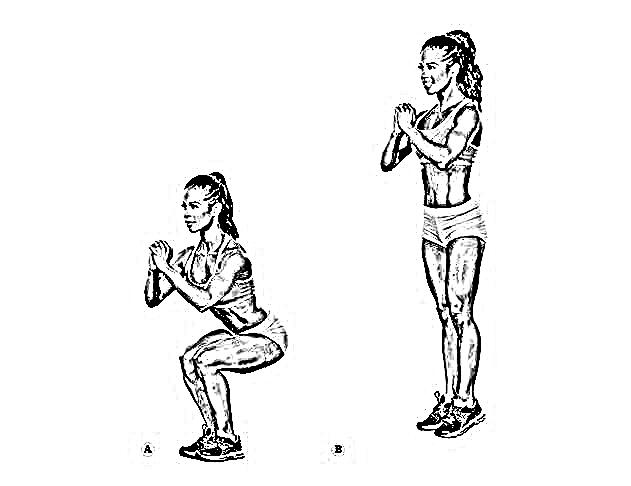
Here are some additional benefits of doing narrow squats regularly:
1. Reduced Risk of Knee and Ankle Injuries:
Narrow squats are considered joint-friendly, particularly for the knees and ankles. The narrower stance places less stress on these joints compared to wider squats. Additionally, the controlled range of motion in narrow squats minimizes the risk of improper tracking of the knees and reduces the likelihood of injuries such as strains or ligament stress.
This makes narrow squats a suitable option for individuals with a history of knee or ankle issues or those aiming to protect these joints during lower body workouts.
2. Stronger Core Muscles:
Core engagement is crucial in narrow squats due to the increased demand for stability. As you maintain a more upright posture with a narrower base, the core muscles, including the abdominals and obliques, work synergistically to support the spine and pelvis.
This sustained activation not only strengthens the core but also contributes to improved posture, reduced lower back strain, and enhanced overall functional strength. A stronger core is beneficial not just for aesthetics but also for daily activities and injury prevention.
3. Improved Balance and Coordination:
The narrower base of support in narrow squats requires heightened balance and coordination. As you descend into the squat and rise back up, the body must maintain equilibrium to prevent tipping or swaying.
This continuous demand for balance sharpens proprioception, the body’s awareness of its position in space, and enhances coordination. Improved balance and coordination contribute to better overall movement patterns, reducing the risk of falls or injuries and enhancing athletic performance.
4. Reduced Stress and Improved Mood:
Engaging in regular physical activity, such as narrow squats, has proven benefits for mental health. Exercise stimulates the release of endorphins, the body’s natural mood elevators.
Narrow squats, with their focus on controlled movement and muscle engagement, offer a mindful and meditative aspect to the workout. The rhythmic nature of squats, combined with the physical exertion, can effectively reduce stress levels and contribute to an improved mood. Incorporating narrow squats into your routine can be a valuable component of a holistic approach to mental well-being.
5. Improved Athletic Performance:
Narrow squats contribute to improved athletic performance by targeting specific muscle groups essential for various sports. The emphasis on quadriceps, hamstrings, glutes, and core muscles enhances the strength and power needed for activities such as sprinting, jumping, and agility drills.
The functional strength developed through narrow squats translates into better athletic performance, making them a valuable addition to the training regimen of athletes across different disciplines.
6. Increased Metabolism:
Any form of resistance training, including narrow squats, promotes an increase in lean muscle mass. Muscle tissue is metabolically active, meaning it requires energy (calories) to be maintained.
As you build muscle through narrow squats, your resting metabolic rate (the number of calories your body needs at rest) increases. This can contribute to a more efficient metabolism, aiding in weight management and overall energy expenditure. Including narrow squats in your workout routine can be a valuable component of a comprehensive approach to boosting metabolism through strength training.
Incorporating narrow squats into your exercise routine not only provides targeted benefits for the lower body but also offers a wide array of advantages for joint health, core strength, balance, mood, athletic performance, and metabolism.
How to do Narrow Squats With Proper Form and Reap These Benefits
Here are the steps on how to do narrow squats with proper form to reap the benefits:
- Stand with your feet together or slightly wider than shoulder-width apart with your toes pointing forward. Engage your core and keep your back straight.
- Bend your knees and squat down until your thighs are parallel to the ground or lower, keeping your back straight and your core engaged.
- Drive through your heels and stand back up to the starting position.
To reap the benefits of narrow squats, it is important to do them with proper form. Here are some tips for proper form:
- Keep your back straight and your core engaged throughout the movement.
- Don’t let your knees go past your toes.
- Keep your weight in your heels.
- Don’t bounce at the bottom of the squat.
- Control the descent and ascent of the squat.
- Start with a light weight and gradually increase the weight as you get stronger.
- Warm up before doing narrow squats by doing some light cardio and dynamic stretches.
- Cool down after doing narrow squats by doing some static stretches.
- Listen to your body and stop if you feel any pain.
Common mistakes to avoid
Here are some common mistakes to avoid when doing narrow squats:
- Leaning forward: This can put stress on your lower back.
- Rounding your back: This can also put stress on your lower back.
- Letting your knees go past your toes: This can put stress on your knees.
- Bouncing at the bottom of the squat: This can reduce the effectiveness of the exercise and increase the risk of injury.
- Not controlling the descent and ascent of the squat: This can increase the risk of injury.
With proper form and technique, narrow squats can be a safe and effective exercise for people of all fitness levels.
How to Maximize These Benefits
Here are some tips for maximize the benefits of narrow squats:
- Use a full range of motion. Narrow squats are more effective when you squat down as deep as possible without compromising your form. This will help you to work more of your muscles and improve your flexibility.
- Focus on your quads and hamstrings. Narrow squats are designed to target your quads and hamstrings, so make sure to focus on these muscles throughout the movement. You can do this by engaging your core and driving through your heels as you stand back up.
- Add weight gradually. As you get stronger, you can start to add weight to your narrow squats. However, it is important to start with a light weight and gradually increase the weight as you get stronger. This will help you to avoid injuries.
- Perform narrow squats with other exercises. Narrow squats can be performed as part of a full-body workout. For example, you can combine narrow squats with other exercises such as lunges, deadlifts, and bench presses. This will help you to work all of your major muscle groups and improve your overall fitness.
- Warm up before doing narrow squats. Warming up will help to prepare your body for exercise and reduce the risk of injury. A good warm-up for narrow squats includes 5-10 minutes of light cardio and dynamic stretches such as leg swings, arm circles, and torso twists.
- Cool down after doing narrow squats. Cooling down will help your body to recover from exercise and reduce the risk of soreness. A good cool-down for narrow squats includes 5-10 minutes of light cardio and static stretches such as hamstring stretches, quad stretches, and calf stretches.
- Listen to your body. If you feel any pain, stop the exercise immediately. It is important to listen to your body and avoid pushing yourself too hard.
By following these tips, you can optimize the benefits of narrow squats and improve your overall fitness.
Conclusion
Narrow squats offer a range of benefits that can help you strengthen your lower body and improve overall fitness. From increased quadriceps activation to improved hip mobility and functional strength development, incorporating narrow squats into your routine can take your leg workouts to the next level.
Remember to start with proper form and gradually increase the intensity as you become more comfortable. As always, consult with a fitness professional before starting any new exercise program, especially if you have any underlying health conditions or concerns.
So, grab a barbell and give narrow squats a try – your lower body will thank you!
Related Posts
Reference:
[1] https://barbend.com/narrow-squats/
[2] https://powerliftingtechnique.com/narrow-stance-squats/
[3] https://steelsupplements.com/blogs/steel-blog/how-to-narrow-stance-squat-forms-benefits
[4] https://boxlifemagazine.com/narrow-stance-squat/
[5]https://www.reddit.com/r/weightroom/comments/11o5lv/narrow_vs_wide_stance_squats/
[6] https://cathe.com/pros-and-cons-of-narrow-vs-wide-squats/


